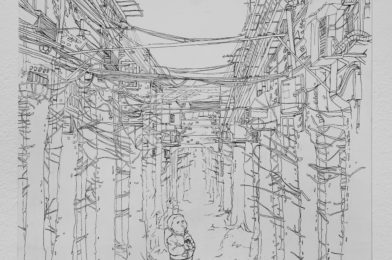Everyone has an obsession. Gregory Robinson channels his fascination of silent films into his book of prose-poetry, All Movies Love the Moon. This book takes readers on an entertaining journey through the evolution of silent films. The creative writing majors of Idyllwild Arts Academy were fortunate enough to Skype with Robinson and ask him questions about his writing.
When and how did you get interested in silent films?
Robinson: It started when I watched The General with a friend who was really into silent films. It was amazing. Silent films have so many surprises, and they break many of the rules that they ultimately helped to establish. Also, as a literary sort, I loved that silent movies ask you to read. As I started to watch more, I noticed how essential the title cards are, and I love how they blend in with the design of the movie. The more silent movies I watched, the more I got into them. Now I’m a big fan. My wife and I go to the silent film festival in San Francisco every year.
I was wondering if you wrote the book in chronological order? Or did you go all around?
Robinson: I totally went all around. I was really worried that the texts would sound detached, and that it wouldn’t be a cohesive piece, but recurring themes eventually emerged on their own.
At what point did you know you were writing the book?
Robinson: I sat down one night and wrote one about the movie Sunrise, and it just sort of clicked. After that, my goal was to write one [prose-poem] a night and write 100 total. I wrote about 50, and just over 30 made it to the book.
You write prose poetry, which is a hybrid combination of two genres (prose and poetry). Hybrid writing, such as this, is not something you generally find on the bookshelf of your local Barnes and Noble. Because of this, did you ever feel like a misfit writer?
Robinson: I thought it would be an unpublishable book. I was not sure if there was an audience, and publishers often don’t want to publish an image and poetry book–it’s really expensive, for one thing. It is also not quite traditional prose or poetry. With prose poetry, I felt like I was not writing in any genre. I was just writing quick quips. I felt like I was writing other things that other people weren’t doing. It’s not so radical, but it did feel different.
How did you find someone who would publish something so unconventional?
Robinson: I found Rose Metal Press as I wandered around at the AWP (Association of Writers and Writing Programs) conference, and I bought The Louisiana Purchase by Jim Goar. Rose Metal Press looks for hybrid works such as flash fiction and image/text combinations. I only spoke with them for a few minutes, but I knew they would be a good fit for me. I had my book mostly written at that point, so I sent it in during their open reading period.
In the book, the speaker references imagined conversations with Ralph Spence, a prominent title card writer in early 1900s. Would you mind describing what it was like to talk with Ralph Spence?
Robinson: I never actually met him; he died a long time ago. In the book, I have some imaginary dialog with his ghost. I can say that he was a very important guy. He knew everyone in Hollywood and lived a movie star lifestyle, including mansions and limousines. His job was to “fix” movies with words. They called him a film doctor, and I love the idea that words could make a movie better. His tagline was “All bad little movies go when they die go to Ralph Spence.” He was not a nice person, though. He had a wife and child that he neglected and he ultimately died alone. He had a grandson, and I did talk to him, but that was the closest I got [to speaking to Ralph Spence]. Spence’s grandson knows very little about him, nor does anyone else. I drove to find Spence’s grave once, but it was mostly grown over. So, the lesson from Spence is that you should write down your stories. At some point, people will want to know who you were. I want to be able to know Ralph better, but I don’t think I ever will.
Was this book supposed to pose more answers to questions about silent movies, or more questions?
Robinson: I hope that I asked more questions. The book should be playful and fun, while dealing with serious issues. In fact, I think the book is kind of a bad place to go for real answers. There are facts scattered throughout, but there are also partial truths, and things that I might like to be true.
What is your definition of immortality? Movies contain an essence of immortality because they last forever, so I was wondering what your definition is.
Robinson: I love thinking about silent movies ahistorically – so rather than considering them immortal works, I try to look at them as if they were created recently. This lets me talk about silent movies without being nostalgic.
What was your favorite movie to watch and what was your favorite poem to write?
Robinson: My favorite poem didn’t make the collection. In fact, I do not think I even submitted it to the press. It was The Passion of Joan of Arc, which is probably my favorite silent movie. My wife is named Joan, and the poem was more a piece for the two of us. My favorite movie to write about was The Woman in the Moon. I love all the scenes, interactions, and innuendos, and what they thought a rocket ship would look like.
What is the future of written word? Do we have anything left to say?
Robinson: I think we do. I love to see authors play with genre and look forward to works that combine genres. For example, think about all the genres that are available – play writing, cookbooks recipes, and obituaries, which aren’t typically creative, but are fertile soil for someone with creative ideas. Take the dullest thing you can find and make it into something amazing. Those are the kind of things I love to read.
Tagged : creative / Gregory Robinson / ideas / Idyllwild Arts Academy / Ralph Spence / Robinson It / Rose Metal Press / San Francisco / write / writer / writing

